by Briscoe White | Nov 22, 2011 | Herbs, Life on the Farm |
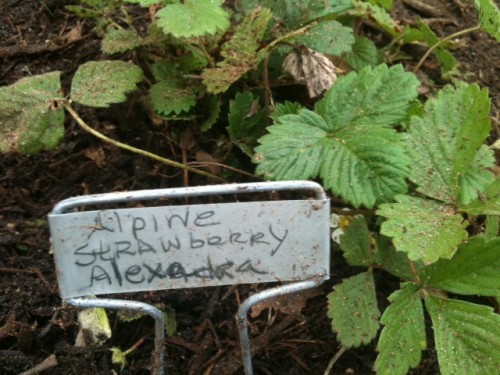
A great way to add personality to your garden (and help you recall what you planted!) is to label your plants with plant markers. Whether you prefer common names, Latin names, their uses (potpourris, teas, plants that attract specific butterflies, etc) or labeling by types of cuisine, plant markers are a terrific way to keep track of your plants and educate visitors who may stroll through your gardens.
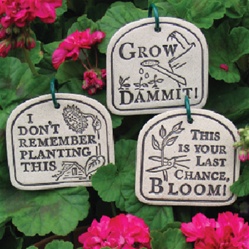
Try showing your humorous side with some of our Stone Plant Tags, and we promise you’ll get a good giggle each time you garden.
We’re finishing our test garden this week as we tidy up for Thanksgiving. After planting so many different types of herbs throughout our landscape, it can be enough to make your head spin! Labeling our herbs gives us a reminder of which varieties we have, making it much easier to run out and snip a few sprigs of Lavender for craft making or Lemon Thyme for our Thyme For Cupcakes recipe! For a great gift for the gardener in your life, try our stylish set of six Slate Garden Markers or our decorative Copper Hang Tags for a more rustic feel.
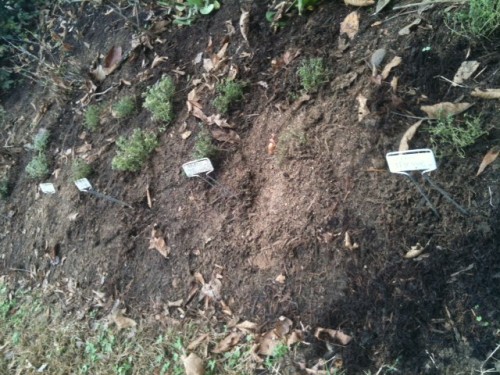
Stay tuned for more news from our test garden, as we showcase our favorite herb plants!
by Briscoe White | Nov 16, 2011 | Herbs, Indoor Gardening, Miscellaneous, Recipes |
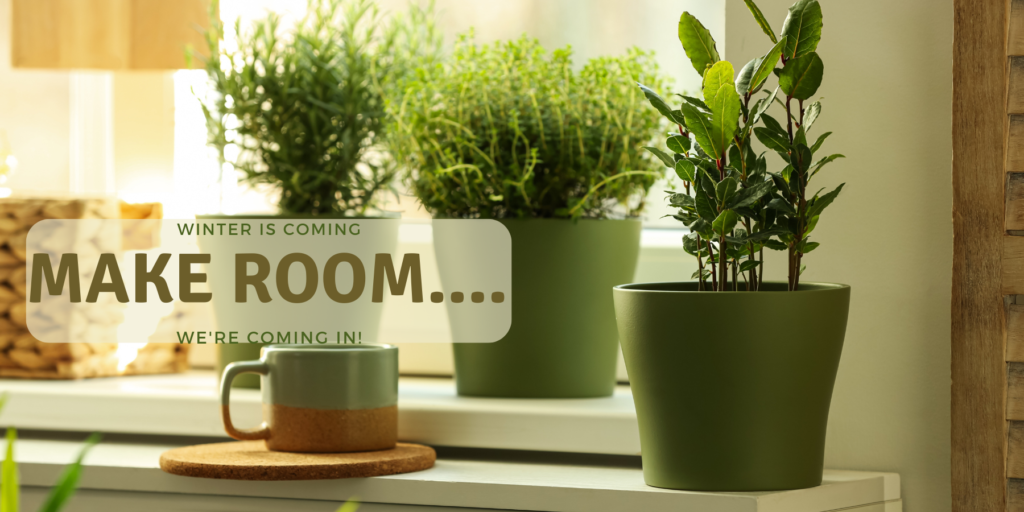
The time has finally come where the nights are getting crisper and the threat of frost is upon most of us in zone 7. While the fall foliage is beautiful, it marks the end of many outdoor gardening tasks until spring thaws the ground again. Before you begin to panic and go harvesting your herbs for drying and freezing, consider transplanting them for indoor use to enjoy fresh flavors all winter long. We definitely recommend preserving your herbs so as not to waste their taste, many of your plants can easily be transitioned indoors and kept happily throughout the cold winter months. Keeping your herbs indoors will ensure a wealth of fresh flavor and natural aroma for all of your hearty winter dishes, holiday meals and hot teas. Keeping your plants indoors will also promise to cheer you up through the winter doldrums and keep your home smelling green and clean without the toxic effects of synthetic air fresheners.
Choose Wisely
Plants like Rosemary, Bay, Lavender and Lemon Verbena will pot very easily and do well over the winter, as do most culinary herbs. For plants that go dormant during this time of year like Mints (they tend to get leggy), you may need to enhance the lighting in your home with grow lights to encourage the plants out of their natural cycle. Herbs need approximately 14 hours of light a day, and about 6-8 hours of direct sunlight to maintain healthy growth. As you’re considering which herbs to bring in, make sure you also consider proper indoor locations for your plants. Southern facing windows will get the most amount of light daily, and as the days grow shorter moving into winter, make sure to accommodate for the waning sunlight by rotating your plants and substituting with alternative light sources.
Transplanting
A few weeks before your area gets its first hard freeze of the year, it’s best to transplant your desired herbs into pots for the winter. Choose only the healthiest plants, leaving any wilted, broken or feeble plants for the compost pile. Dig your plants carefully, and try to extract the entire root system. Once your plants are removed from the ground, pot them into new containers with new potting soil to prevent spreading any disease. Make sure to pot them in deep pots and leave them outside for a few days to acclimate to their new environments before bringing them inside.
Find The Right Spot
Once your plants have recovered and have been moved inside, make sure to not only choose a sunny location, but also consider the temperature and humidity in the area they are placed. For example, you wouldn’t want to place your plants on the mantle of your fireplace that you enjoy using, as they will dry out quickly, just as you don’t want to place them near a drafty door as they may get too cold. Monitor their needs for a while to see if they need more or less water and pay attention to their color and growth. Typically herbs don’t need a lot of water, and you can maintain this by sticking your finger about a half inch into the soil to test for moisture. As long as the temperature in the room does not go below 50 degrees your plants should be warm enough to keep growing.
For more information and some tips on growing herbs indoors, see our article Growing Herbs Indoors.
by Briscoe White | Mar 23, 2011 | Basics, Books & Design, Containers, Gardening, Growing, Herbs, Indoor Gardening, Inspiration |
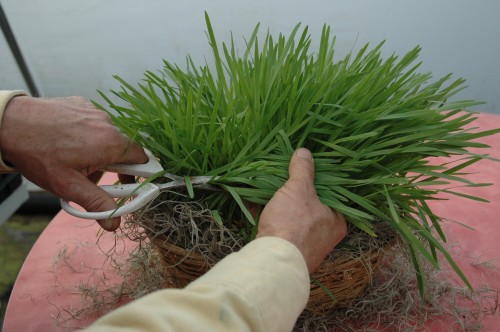
The grass in your Easter Basket, like the grass in your yard, will need periodic trims. When your grass grows to be about 9” tall, give it a little haircut by holding a clump of blades in one hand and trimming off the tops with pruning shears. Be sure to snip the flat part of the blade, not the more round part of the blade near the base. Periodic pruning will encourage the grass to reinvest its energy into growing stronger, and it helps keep your mini “lawn” in lovely shape. Continue to keep it in a nice sunny window and with frequent watering and regular pruning, your Easter grass will last you long after Peter Cottontail has hopped off down the bunny trail!
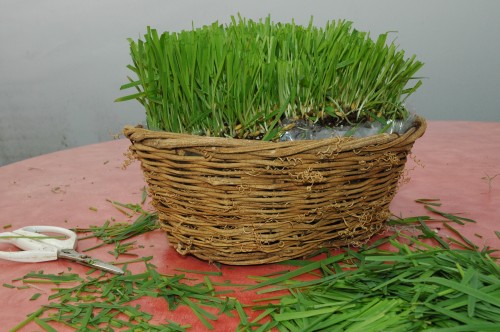
by Briscoe White | Mar 18, 2011 | Basics, Books & Design, Gardening, Growing, Herbs, Miscellaneous |
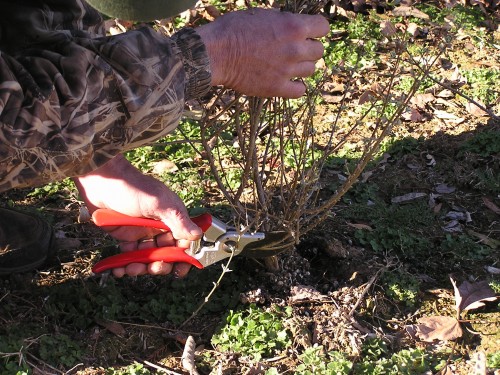
Many gardeners are afraid to prune their shrubs. Don’t be timid! Pruning is one of the most important tasks in keeping your plants healthy and happy. Just like humans, plants need a little “haircut” sometimes too! Of course, if you’re dealing with a small shrub feel free to prune the tree yourself, but pruning big trees, or any other tree surgery for that matter such as hedge trimming or tree removal, is fairly dangerous to do by yourself. I would recommend a professional in this case, such as Broadleaf, a local tree surgeon in the UK. Due to my plants only being small shrubs, I’ll continue doing the hard work myself!
Many plants grow with a dominant branch, supplying a flow of nutrients to smaller branches. Keeping this dominant branch trimmed regularly ensures all branches have sufficient access to vital sap. Otherwise, your plant will grow into one scraggly unkempt branch or one trailing vine, allowing it to be very vulnerable to getting tipped over or being snagged and broken off.
Many of our most popular herb plants, such as Germander, Lavender, Mojito Mint, Rosemary, Eucalyptus, and Pineapple Sage, need regular trimmings to ensure your plant grows to a healthy bushy plant. For bushy, non woody plants like Cilantro, Lovage and Parsley, you can just gather the leafy stems into a bunch and take a little off of the top all at once.
And don’t forget about those dormant shrubs in your yard! They need attention too! It’s not too late, but the best time to prune your shrubs is right before spring hits. Snip up to one third off the top of your shrub to encourage new growth. Keep in mind that the winter can be very hard on your shrubs, so if you find breakage points, like we did with one of our Silver Drop Eucalyptus trees, it’s best to trim below the break so that new growth can form. We didn’t catch this one early enough and it killed the majority of the plant, but we’re hoping if we cut it back to a few inches from the ground, it will regrow its beautiful branches.
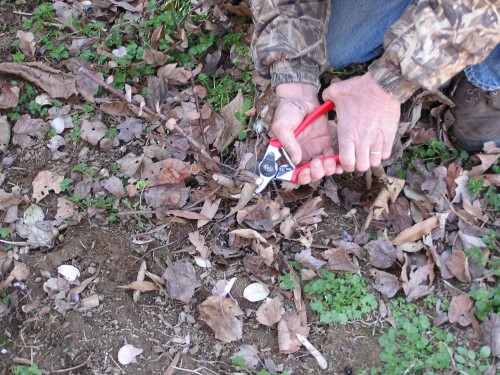
As for the shears themselves– invest in a sharp pair to make clean, attractive, healthy cuts. Your neighbors probably don’t want to stare at gnarled branches all day. We recommend Our Favorite Felco pruning shears. They can cut through just about everything from thick, woody stems to wire, they’re durable and comfortable and besides, they call them our favorite for nothing!
by Briscoe White | Mar 11, 2011 | Books & Design, Gardening, Growing, Herbs |
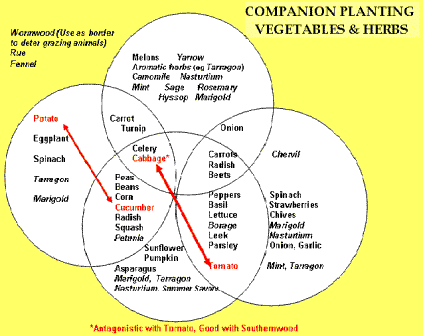
Here at The Growers Exchange, we’re excited to say we have officially started our annual employee vegetable garden! We have started our early spring greens, broccoli, and cabbage, and have added a few herbs to the mix as companion plants.
Broccoli and the entire cabbage family (including cauliflower, kale, kohlrabi, collards, and brussel sprouts) grow wonderfully with aromatic herbs such as dill, chamomile, sage, rosemary, hyssop, and thyme. All members of the cabbage family are heavy feeders, and will greatly benefit from nearby, healthy, herb plants– plants who will double as insect repellents! Although the white cabbage butterfly is not harmful and can help pollinate, its pesky caterpillars are the ones who will chomp away at and destroy your crop. Aromatic herbs will help keep these hungry little guys away.
by Briscoe White | Mar 9, 2011 | Growing, Herbs, Inspiration, Miscellaneous |
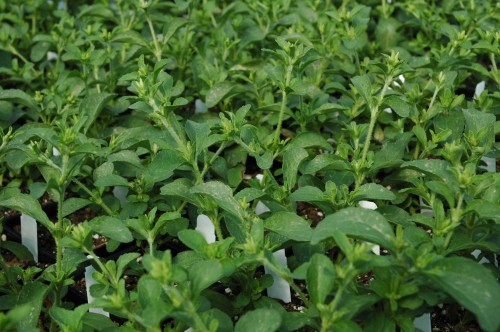
Looking to replace sugar in your life? Try Stevia! Stevia is an herb with a naturally occurring sweetness that is between 40 and 300 times sweeter than sugar (depending on the strength of the plant and the method by which its sweeteners are extracted). The natural sweetness is derived from the plant’s glycosides, which is called Stevioside. Stevioside is intensely sweet-tasting, doesn’t break down at high temperatures, is not a mutagenic and will not cause cancer in humans. Whether extracted in liquid form or found in powdered form as an alternative to table sugar, Stevia shows to be a very valuable plant for many healthy reasons. Calorie free, this herbal substitute to weight-causing white sugar is also safe for diabetics. Because Stevia does not raise blood sugar levels, it seems to be a great alternative to sugar for diabetics, but consultation with a medical professional is advised before altering your diet. Studies also show that Stevia does not promote tooth decay and that it may in fact help prevent plaque, according to research done at Purdue University. This sweet herb is also antibacterial and may aid patients who suffer from hypertension.
Although growing Stevia from seed is a trying process due to difficult germination and a scarcity of seed, growing Stevia from established plants and harvesting at home is a cinch! This shrubby herb is a tender perennial in warmer zones and will thrive in full sun. It prefers loamy, well-drained soil and needs to be kept moist but not saturated with water. It can grow up to eighteen inches high and does great in the garden or potted in a container for easier accessibility. Stevia can be a great culinary herb for flavoring drinks and dishes, but will not caramelize like sugar, so you may want to leave it out of your meringues and other dishes that require caramelization. Try growing some today and you can easily harvest the plant’s natural sweetener with the following method:
Harvesting Natural Sweetener from Stevia Plants
Materials:
2 Cups Fresh Stevia leaves, washed
1 Measuring Cup
Coffee Filters
1 Sauce Pan
1 Cup Grain Alcohol (You can use Vodka, Scotch, Brandy or whatever you prefer)
1 Strainer
1 Knife
1 Glass bowl
Preparation:
1) Chop the fresh Stevia leaves well to release the natural sweeteners. This will allow the leaves to more easily break down and for more of the plant’s sweetness to be extracted during the distillation process.
2) Allow the chopped leaves to steep in one cup of your preferred grain alcohol for twenty-four hours, in a covered glass bowl. Don’t worry. The alcohol will later be cooked out of the mix, but allowing the leaves to “bathe” in stiff spirits will separate the plant’s chemical components, removing the natural stevioside that we want.
3) After about twenty-four hours, strain the mixture through a strainer lined with coffee filters. This will remove and unwanted leaves and other plant materials, allowing only the herb’s extract and the alcohol to pass through.
4) Add the extracted concoction to your sauce pan and heat on low. Be sure not to simmer or boil your extract, as you want it to be hot enough only for most of the alcohol to evaporate out.
5) Once the majority of the alcohol burns off, your result is a concentrated extraction of the herb’s natural sweetener.
6) Make sure to dilute with water before using, as this is a concentrated form of Stevia that will be very sweet and may overwhelm your dish. Dilute with one part Stevia extract, to three parts water.










